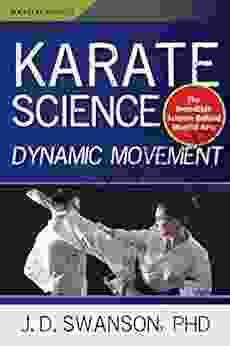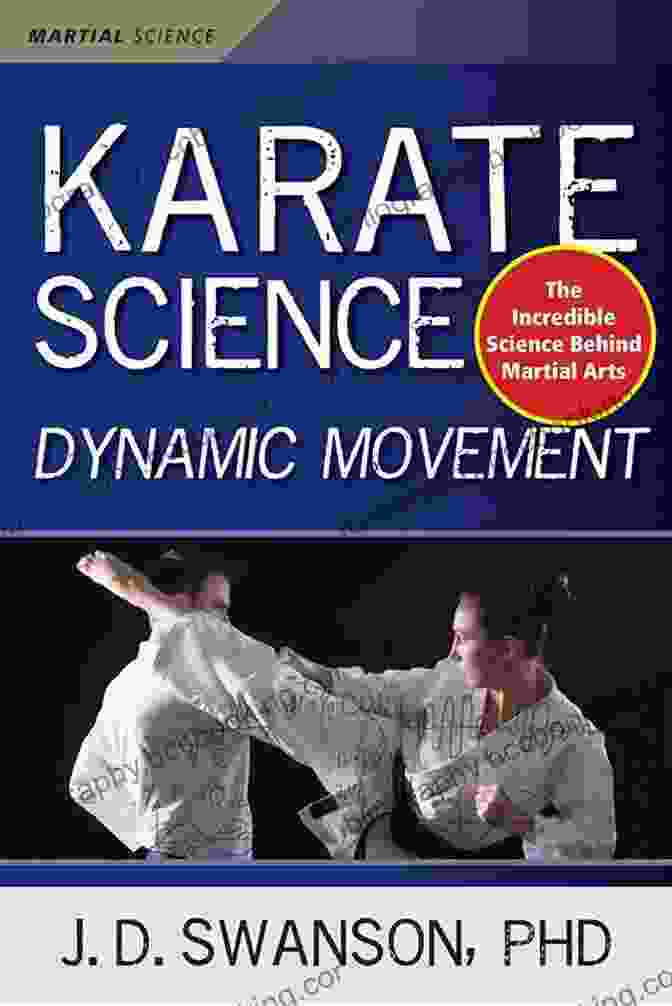Karate, an ancient martial art originating from Okinawa, has captivated the world with its dynamic movements and potent techniques. Beyond its physical prowess, karate embodies a rich tapestry of scientific principles that govern its effectiveness. In the groundbreaking book "Karate Science Dynamic Movement Martial Science," authors Dr. Patrick McCarthy and Michael Hennessy unravel the intricacies of these principles, providing a comprehensive exploration of the science behind the art.
Understanding the Biomechanics of Movement
At the heart of karate's effectiveness lies its sophisticated biomechanics. The book delves into the intricate interplay of muscles, joints, and leverages, explaining how these elements orchestrate fluid and powerful movements. Through detailed illustrations and scientific analysis, readers gain an unprecedented understanding of the mechanics that propel lightning-fast strikes, graceful evasions, and bone-crushing blocks.
4.5 out of 5
| Language | : | English |
| File size | : | 44859 KB |
| Text-to-Speech | : | Enabled |
| Screen Reader | : | Supported |
| Enhanced typesetting | : | Enabled |
| Print length | : | 228 pages |
Neurological Foundations and Reaction Time
Karate's precision and lightning-fast reactions are no mere coincidence but the result of finely tuned neurological processes. The book unveils the vital role of the nervous system in controlling movement, perceiving threats, and executing countermeasures. By exploring the neural pathways and reflexes involved in karate techniques, readers gain insights into the cognitive and sensory foundations of this martial art.
Training for Optimal Performance
"Karate Science Dynamic Movement Martial Science" serves as an invaluable guide for karate practitioners seeking to elevate their performance. The authors delve into training methods that optimize muscle recruitment, enhance flexibility, and cultivate explosive power. Readers learn how to tailor their training to their specific needs and goals, whether it be competition, self-defense, or personal fitness.
Safety, Injury Prevention, and Rehabilitation
Karate's rigorous nature necessitates a keen understanding of safety protocols and injury prevention techniques. The book provides comprehensive guidance on proper warm-up and cool-down procedures, injury prevention strategies, and treatment protocols for common injuries. Through this knowledge, karate practitioners can minimize the risk of injury and ensure their long-term well-being.
Historical Context and Cultural Significance
Beyond its scientific underpinnings, karate is steeped in a rich cultural and historical heritage. The book traces the origins of karate in Okinawa and explores its development and evolution through the centuries. Readers gain insights into the philosophies, rituals, and traditions that have shaped this martial art and its place in society.
Applications Beyond the Dojo
While karate's prowess in self-defense and competition is undeniable, the principles it teaches extend far beyond the dojo. The book demonstrates how the concepts of balance, power, and focus can be applied to various aspects of life, including personal development, leadership, and stress management. By embracing the lessons of karate, individuals can cultivate resilience, adaptability, and a mindset conducive to success in all endeavors.
"Karate Science Dynamic Movement Martial Science" is a must-read for any karate practitioner, martial artist, or anyone fascinated by the intersection of science and human movement. It is an indispensable resource that demystifies the complexities of karate, providing a comprehensive understanding of its biomechanics, neurological foundations, training methodologies, safety protocols, and cultural significance. Through this book, readers can unlock the true potential of this ancient martial art and harness its principles to enhance their physical performance, cognitive abilities, and overall well-being.



























































































